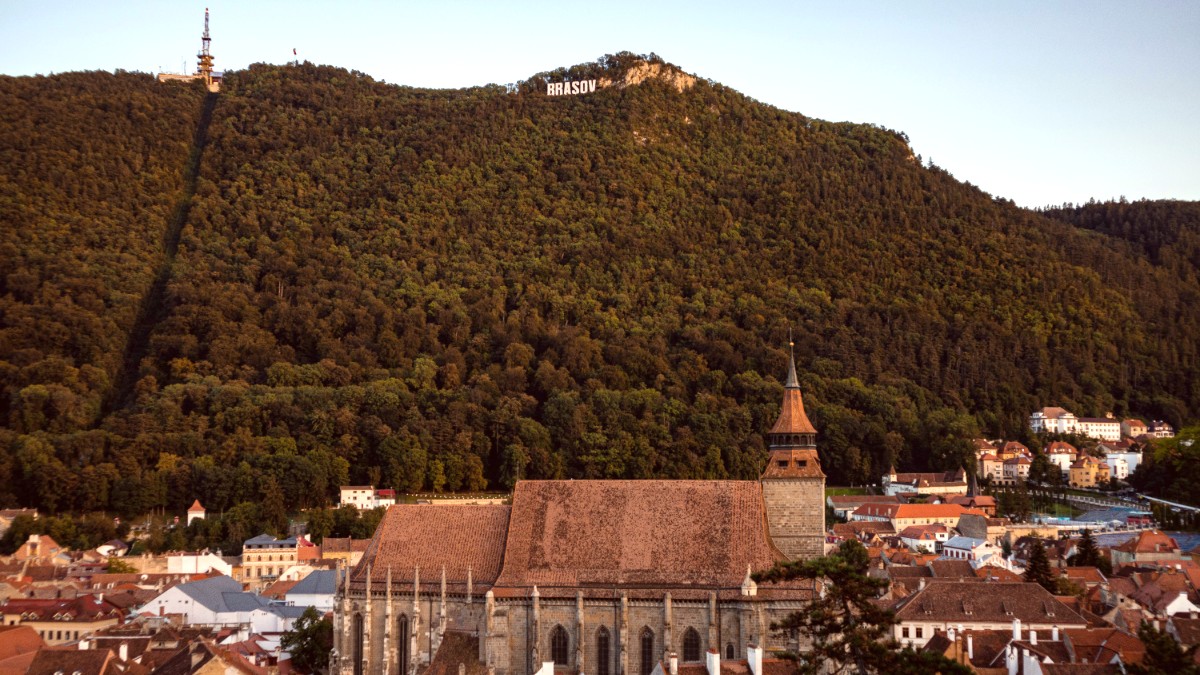
Transylvania, Romania
Brasov's cuisine represents Transylvania. It features dishes like goulash (a Hungarian influence), sarmale (cabbage rolls), and various soups (ciorbă).
Expect generous portions and comforting flavors.
Common ingredients include pork, chicken, beef, cabbage, and potatoes. Cornmeal, used for mămăligă (polenta), is a staple.
Sour cream (smântână), garlic, onions, dill, and paprika are widely used. Flavors are typically savory, rich, and often slightly sour due to fermented ingredients like sauerkraut.
Meals often are social and generous occasions. Offer a toast ("Noroc!" - Cheers!) to your dining companions. Romanians eat with forks and knives. Tipping is common. Wait for the bill to be brought to your table.
Cabbage rolls (or sometimes vine leaves) filled with a mixture of minced meat (pork, beef, or a mix) and rice. These are slow-cooked.
Often served with mămăligă (polenta) and a dollop of sour cream. Widely available in traditional Romanian restaurants.
A staple, this thick porridge is made from yellow cornmeal. It often accompanies other dishes or serves as a main course with cheese and sour cream.
You can find mămăligă everywhere.
Grilled skinless sausages made from a mixture of ground meats (pork, beef, lamb) seasoned with garlic, thyme, and other spices.
A popular street food and BBQ item. Available at grills and traditional restaurants.
Large, soft pretzels, often topped with salt or poppy seeds. Find them from street vendors and bakeries. They make a quick and satisfying snack.
A sweet, hollow, cylindrical pastry baked over an open flame. It is often coated with sugar, walnuts, or cinnamon. Popular in Transylvania.
While Brasov has fewer high-end fine dining establishments than Bucharest, some restaurants give elevated Romanian or international cuisine.
These are abundant throughout the Old Town and offer a balance of quality and price.
Affordable and authentic meals can be found throughout the city.
Availability is increasing in Brasov. Many traditional Romanian dishes are meat-heavy, but vegetarian options like mămăligă with cheese, salads, mushroom dishes, and vegetable soups are common. "Post" (fasting) dishes are traditionally vegan and are often available, especially during religious fasting periods (e.g., Lent, Advent).
Awareness is growing, but it is advisable to learn phrases in Romanian (e.g., "fără gluten" - "without gluten") or carry a dietary translation card.
While some restaurants may accommodate, cross-contamination can be a concern in smaller, traditional eateries. Communicate clearly with restaurant staff about your needs.
Piața Star and Piața Dacia are main central markets for fresh produce, local cheeses, meats, and prepared foods.
Brasov has a good selection of international restaurants, including Italian, Chinese, Turkish, and Lebanese options, especially in the Old Town area.
Țuică/Palincă (plum brandy), local wines, and popular local beers like Ursus are common. Socată (elderflower drink) is a refreshing non-alcoholic choice.
Lamb dishes are traditional during this holiday. Sweet bread (Cozonac) also features.
Pork dishes, traditional sweet bread (Cozonac), and various charcuterie feature prominently.
Consider dining in a traditional Transylvanian cellar restaurant for a rustic, authentic experience.
Brasov occasionally hosts local food fairs or harvest festivals, specifically in the autumn.
Traditional Romanian strong plum brandy (Țuică) or other fruit brandy (Palincă). Potency varies greatly.
Romania has a growing wine industry.
Popular local brands include Ursus, Ciuc, and Timișoreana.
Specific Halal restaurants are very limited or non-existent in Brasov. Halal meat may be found in specialized shops, but it is not widely available in general restaurants.
Plan accordingly.
Kosher restaurants are very limited or non-existent in Brasov.
Plan accordingly.
Tipping (10-15% for good service) is common. Wait for the bill to be brought to your table.
Expect generous portions in traditional Romanian restaurants.
Learning a few basic Romanian phrases for dining can enhance your experience.
Always confirm ingredients with staff, especially for dietary needs.